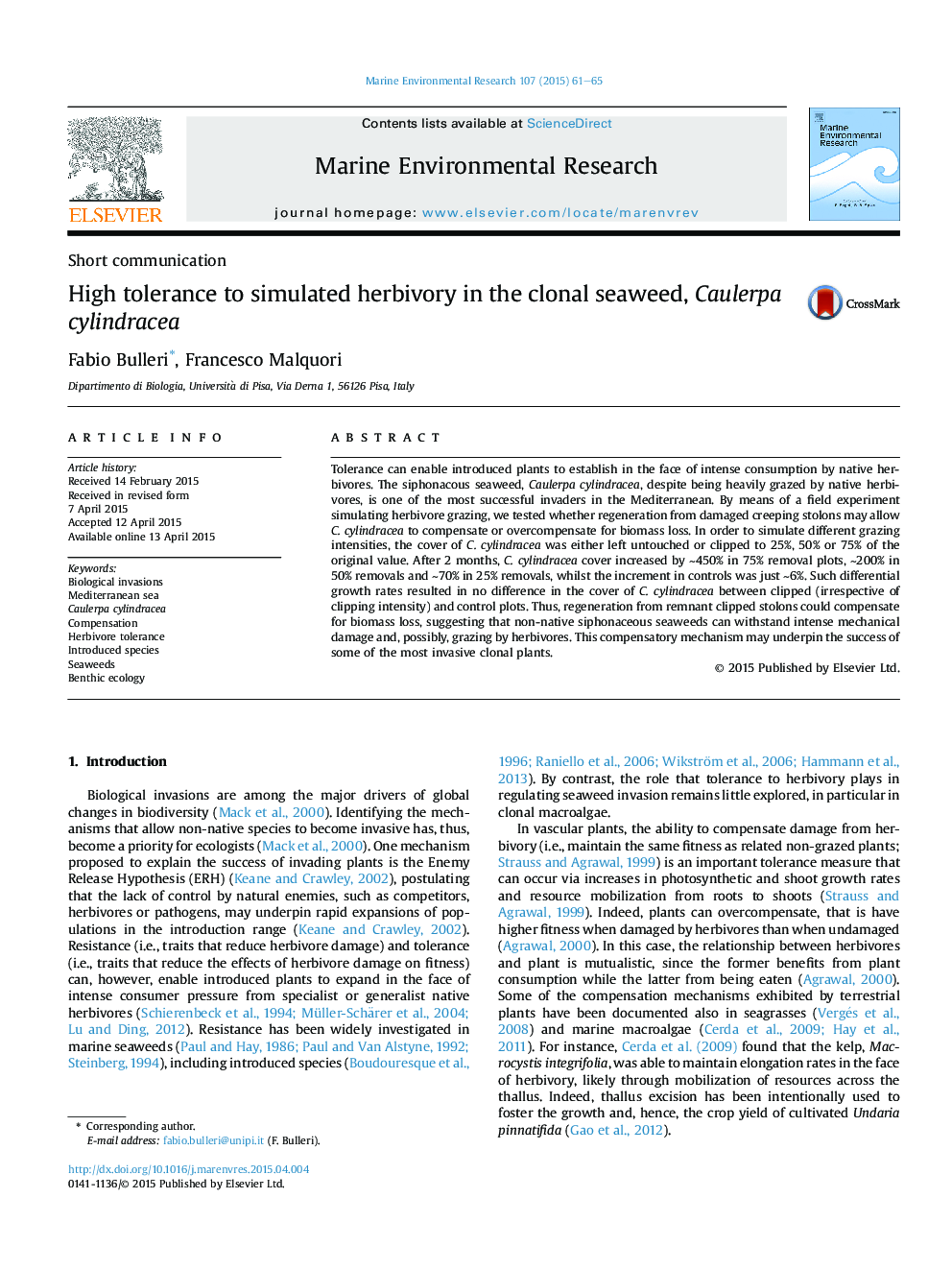| کد مقاله | کد نشریه | سال انتشار | مقاله انگلیسی | نسخه تمام متن |
|---|---|---|---|---|
| 4550705 | 1627575 | 2015 | 5 صفحه PDF | دانلود رایگان |

• The role of herbivore tolerance in regulating invasion success has been little explored in clonal seaweeds.
• Caulerpa cylindracea exhibited a marked ability to compensate biomass loss to simulated herbivory.
• This mechanism may explain the success of C. cylindracea in the face of intense herbivory.
Tolerance can enable introduced plants to establish in the face of intense consumption by native herbivores. The siphonacous seaweed, Caulerpa cylindracea, despite being heavily grazed by native herbivores, is one of the most successful invaders in the Mediterranean. By means of a field experiment simulating herbivore grazing, we tested whether regeneration from damaged creeping stolons may allow C. cylindracea to compensate or overcompensate for biomass loss. In order to simulate different grazing intensities, the cover of C. cylindracea was either left untouched or clipped to 25%, 50% or 75% of the original value. After 2 months, C. cylindracea cover increased by ∼450% in 75% removal plots, ∼200% in 50% removals and ∼70% in 25% removals, whilst the increment in controls was just ∼6%. Such differential growth rates resulted in no difference in the cover of C. cylindracea between clipped (irrespective of clipping intensity) and control plots. Thus, regeneration from remnant clipped stolons could compensate for biomass loss, suggesting that non-native siphonaceous seaweeds can withstand intense mechanical damage and, possibly, grazing by herbivores. This compensatory mechanism may underpin the success of some of the most invasive clonal plants.
Journal: Marine Environmental Research - Volume 107, June 2015, Pages 61–65